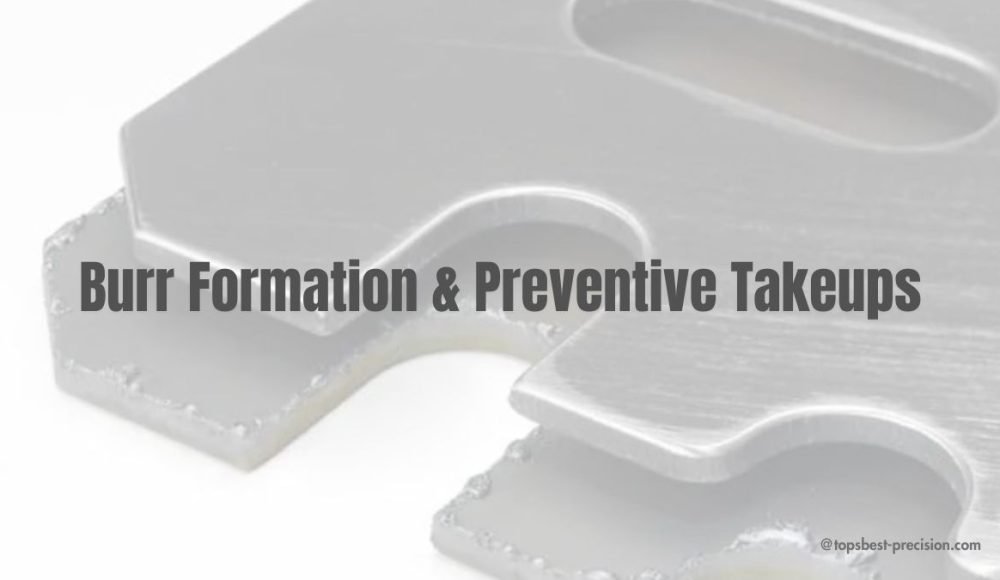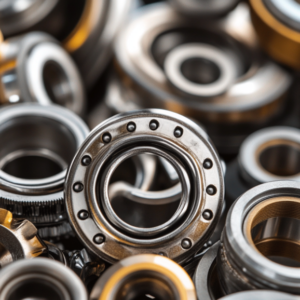When getting laser cutting services, normally you are paying for quality work and excellent service. However, sharp edges can be a typical problem. In some cases, cutting results in the formation of burr, and hence deburring is needed. Deburring has many techniques; just like burrs can be created in numerous ways. So, let’s take a look at both aspects of this topic.
What Is a Burr?
A burr is defined as a rough surface or raised edge on a metal part. This problem is most frequently observed during production, most commonly in sheet metal cutting. Burrs have a great influence on the quality and performance of metal parts. Here are some key impacts of burrs:
- Safety Hazards: Hazards are associated with sharp edges for operators.
- Increased Stress: Burrs may potentially result in reduced resistance to fractures.
- Corrosion Risk: Thicker material thicknesses can also lead to corrosion.
- Lubrication Issues: Burr may also block the flow and hinder the operation of lubricating.
- Finishing Problems: They may pose a problem in operations such as powder coating.
The prevention of burr formation is obvious. However, since deburring is often a result of manufacturing, it becomes essential to do so.
Burr Formation In Manufacturing Processes
Burrs always develop during the manufacture of metallic sheets through many processes depending on the part type. These may include machining and cutting.
Common machining processes that leave burrs include:
- Milling: Milling, is an identical process employed by using some sort of cutters. These sharp cutters rotate to shave off the material. So, chances of burrs associated there.
- Drilling: Leaves gaps and could even form sharp edges.
- Engraving: Scratches the surface, and may leave behind some ridges/scratches.
- Turning: In turning, the workpiece is revolved around a cutting tool, which may lead to burr formation.
Cutting processes used on sheet metal that result in burrs include:
- Laser Cutting: Cuts materials by using focused light.
- Plasma Cutting: Uses ionized gas to cut to shape metal.
- Punching: Pushes a punch through the material to be cut out.
- Shearing:Cuts metal by exerting shear force only.
- Blanking:Cuts and or eliminates areas on sheet metal.
Generally speaking, not all aforementioned techniques always generate burrs. Several other factors are known to affect burr formation. As such, the ability of the operator and his/her awareness of the issue can also go a long way to reducing burrs. Moreover, the thickness and material grade determines how easily the material will be cut without the formation of burrs. Luckily, burrs strip gives the metal a smoother surface because they can be removed.
Types of Burrs In Contemporary Manufacturing
Manufacturing always involves the production of burrs. Therefore proper deburring methods are crucial. As there are many kinds of burrs, it is essential to choose the proper way of their elimination to achieve the best outcome.
Cut-Off Burr
A projecting cut-off burr involves undesirable projection from a workpiece, common when operations of cutting miss their target. The intended type is often seen with automatic screw machines or saws. For accuracy-demanding processes, the deburring can be done manually to get rid of cut-off burrs.
Tear Burr
Further, tear burrs occur when the cutting action results in more tearing of the material than shearing. This typically produces a ragged surface. Chemical deburring is perhaps, the most effective method of eliminating these burrs from the finished workpiece surface. A technique used in this case dissolves the burrs while it leaves the rest of the material intact. So, overall, it helps preserve the product quality.
Rollover Burr
Of these, rollover burrs occur in shearing, piercing, or punching operations. Vibratory deburring machines are utilized by manufacturers for eliminating these burrs. These machines are designed to provide mechanical vibrations as part of the removal process.
Hot and Sharp Burrs
Hot burrs are formed by irregular heating and cooling cycles. While sharp burrs are inherent to the manufacturing procedures of stainless steel. Both of these present a danger to safety in a factory environment. To optimally remove these burrs, thermal deburring is encouraged. Thermal deburring applies to control heat to burn off the burrs instantly.
Rollover Burrs
Rollover burrs are also called exit burrs. They occur on workpiece sides where the tool is exiting. These burrs arise when the material is rolled with the tool and is forced over a ledge. The typical size of these burrs depends on the depth of the machining cut used while the process.
Poisson Burrs
Poisson burrs form on the side of the workpiece where the material flows during machining. Specifically, on the side where the tool first enters the material. The primary reason behind their formation is when the material is displaced perpendicular to the edge by deformation.
Tear Burrs
Tear burrs occur during tearing-off of material from the workpiece rather than shearing. This type of burr is quite typical for such operations as punching when the material is ejected forcibly.
Breakout / Cut-Off Burrs
Breakout burrs often occur when the portion being cut off from any structure detaches from the main body. They are usually found in saw cuts and automatic screw machine products. Usually, results in rough surfaces.
Thermal Burrs
Thermal burns appear during thermal processes, including welding, molding, and laser cutting. These burrs are also identified as slags or spatters. They result from the material being heated and then quenched for instant cooling during the production stages.
Techniques for Efficient Deburring
Although, burr formation can not be stopped during manufacturing. There are ways, however, to deburr the parts/products.
Chemical Deburring
The chemical deburring process eliminates only burrs on metal surfaces by using electrolyte solutions. The process is especially vital in handling internal burrs which are often hard to handle by conventional techniques. The small burrs are particularly common in mating surfaces of parts such as pump bodies and valve bodies.
Electrolytic Deburring
Electrolytic deburring process whereby, via electrolysis, burrs are removed from the metal surface. Although, this process is efficient and can undoubtedly remove various complex burrs from the easy-to-access regions. The following demerits are associated with electrolytic deburring.
Demerits of Electrolytic Deburring
- The electrolyte is corrosive and may tarnish surfaces.
- Can compromise dimensional stability near the burr.
- Requires cleaning after the deburring process.
- Best for hard-to-reach areas, like cavities.
Further Burr Classifications
To standardize the definition of burrs across various industries, five classifications have been established:
Class 1: Mini-size burrs which can only be seen by a microscope.
Class 2: Feather burrs, small burrs that are easily distinguishable with the naked eye.
Class 3: Small, well-attached burrs.
Class 4: Large, well-attached burrs.
Class 5: Extruded burrs, not true burrs but deformations of extruded material produced during drilling.
Conclusion
To improve efficiency and reduce costs, it is important to minimize the number of burr removal processes. Thus, it is advisable to work with a manufacturer such as Tops Best that will supply burr-free, clean parts where possible. Nevertheless, some materials and thicknesses can create burrs in the process. If your parts have burrs on the ‘inside,’ the producer should be informed of this fact as well.
If burrs are inevitable, you can choose a deburring process from the one discussed earlier in this article. When working with a batch of parts, it is unwise to spend time manually deburring them; therefore, implement an automated method. Contact us for more information.
FAQ’s
Q1. What are burrs and why do they appear?
Burr is defined as a rough surface or sharp edge. Normally, they develop on a metal part during a manufacturing process. They can occur during cutting or machining or any thermal operations. The burr formation may have a significant impact on safety and performance.
Q2. What are the various techniques of deburring?
Some of the usual deburring techniques are hand deburring, thermal energy deburring, and Chemical energy deburring. They all have different efficiency and appropriateness concerning the burr type and material being used.
Q3. What measures should be taken to avoid burr formation during the manufacturing process?
To minimize the formation of burr, one needs to choose appropriate cutting tools and methods. Further, optimally, define the proper parameters of the machine. Besides, the choice of appropriate materials and the preservation of the appropriate level of operators’ experience can help to minimize the problem of burr formation.
Q4. What types of material are most susceptible to burrs?
Most frequently rigid metals and some plastics are known to develop burrs when undergoing machining and cutting operations.




1 thought on “What Is a Burr & How to Remove It?”